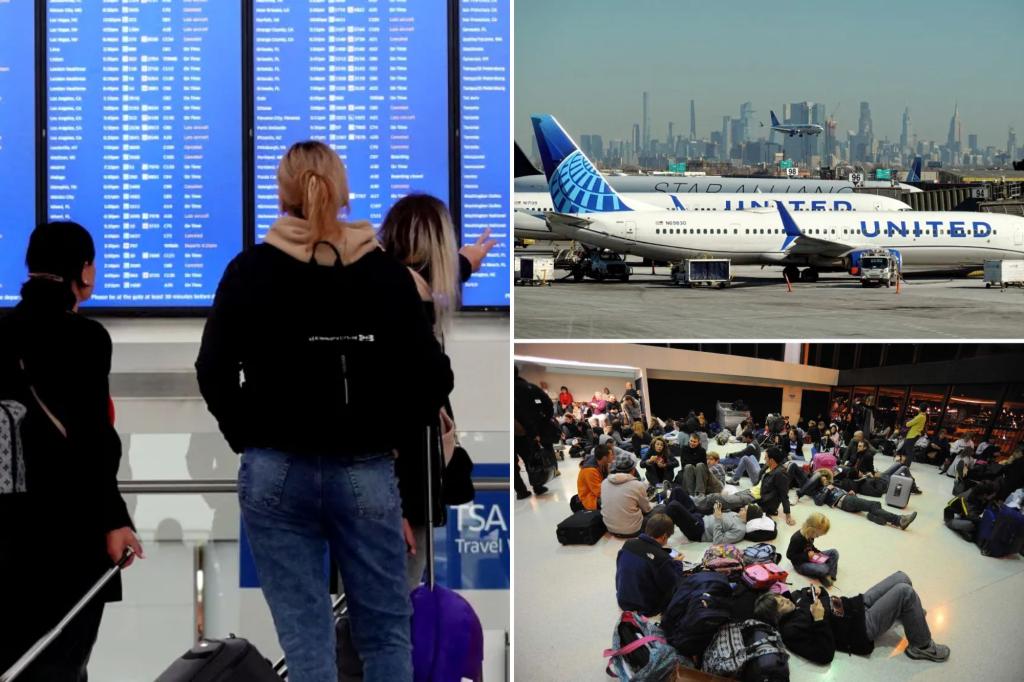Unveiling the Controversial Solution to Newark Airport’s Ongoing Crisis
Newark Liberty International Airport (EWR), one of the busiest hubs in the New York metropolitan area, faces a mounting operational crisis due to chronic delays, overcrowding, and aging infrastructure. Aviation experts now propose a radical yet straightforward fix: capping the number of flights. While this solution could alleviate congestion, it sparks fierce debate among airlines, passengers, and local officials. The potential changes may redefine travel experiences and economic impacts for millions of travelers annually.
The Root Causes of Newark Airport’s Struggles
Newark Airport handled over 43 million passengers in 2022, nearing its pre-pandemic traffic levels. However, its infrastructure hasn’t kept pace with demand. Key issues include:
- Overcapacity: The airport operates at 90%+ capacity during peak hours, far exceeding the 70% threshold recommended for smooth operations.
- Aging Facilities: Built in 1928, Newark’s terminals and runways require costly upgrades to modern standards.
- Airspace Congestion: Its proximity to JFK and LaGuardia creates complex traffic management challenges.
“Newark is like a clogged artery in the nation’s aviation network,” says Dr. Alicia Chen, an aviation economist at Rutgers University. “Without intervention, delays will cascade across the entire East Coast.”
The Proposed Flight Cap: How It Would Work
The controversial solution involves limiting hourly flight operations to 75-80, down from the current 100+ during rush periods. This approach mirrors strategies implemented at London Heathrow and other congested hubs. Proponents argue it would:
- Reduce taxiway gridlock by 40-60%
- Decrease average delay times from 57 minutes to under 20
- Improve on-time performance to 85%+ (currently 68%)
However, critics counter that flight restrictions would raise fares by limiting supply. “This is a Band-Aid solution that ignores Newark’s true capacity potential,” argues Mark Richardson, spokesperson for the Air Transport Association. “With proper investment, the airport could handle 50% more traffic efficiently.”
Stakeholder Reactions and Economic Implications
The proposal has divided key groups:
- Airlines: United Airlines (EWR’s dominant carrier) opposes caps, while smaller competitors support them as a way to gain operational parity.
- Passengers: Business travelers prioritize reliability, whereas leisure flyers fear ticket price hikes.
- Local Businesses: Retailers and service providers worry reduced foot traffic would hurt revenues.
A Port Authority of NY/NJ study estimates flight restrictions could:
- Cost regional economy $300 million annually in lost activity
- Save travelers $150 million in delay-related expenses
- Reduce carbon emissions by 18,000 metric tons yearly
Alternative Solutions Under Consideration
While flight caps gain attention, other options remain on the table:
- Terminal Modernization: A $2.7 billion upgrade program already underway
- Peak Pricing: Higher fees for rush-hour slots to naturally redistribute demand
- Improved Ground Transport: Expanding AirTrain connections to reduce short-haul flights
“We need a balanced approach,” suggests FAA regional director Carlos Mendez. “Technology upgrades, better passenger flow management, and selective capacity adjustments could collectively solve this.”
What Travelers Can Expect in Coming Months
The Port Authority will decide on flight restrictions by Q1 2024 after environmental and economic reviews. In the interim, passengers should:
- Book mid-day flights when possible
- Allow extra connection time
- Monitor airport advisories for policy changes
As Newark Airport’s crisis reaches a tipping point, its solutions will set precedents for congested airports nationwide. Travelers and industry watchers alike should stay informed as this developing story unfolds. Sign up for our transportation newsletter to receive updates on this and other critical travel infrastructure issues.
See more BBC Travel World



